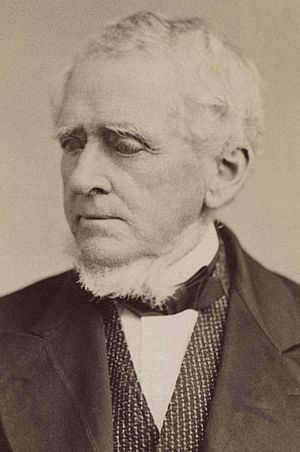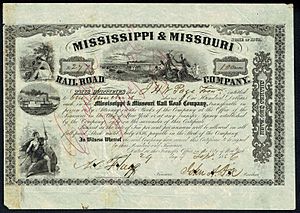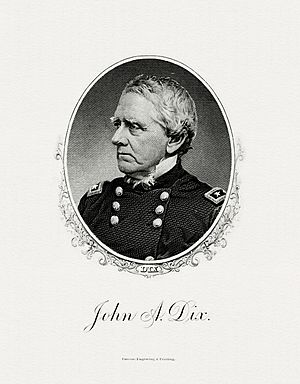John Adams Dix facts for kids
Quick facts for kids
John Dix
|
|
|---|---|
 |
|
| 24th Governor of New York | |
| In office January 1, 1873 – December 31, 1874 |
|
| Lieutenant | John C. Robinson |
| Preceded by | John T. Hoffman |
| Succeeded by | Samuel J. Tilden |
| United States Minister to France | |
| In office December 23, 1866 – May 23, 1869 |
|
| President | Andrew Johnson Ulysses S. Grant |
| Preceded by | John Bigelow |
| Succeeded by | Elihu B. Washburne |
| 24th United States Secretary of the Treasury | |
| In office January 15, 1861 – March 6, 1861 |
|
| President | James Buchanan |
| Preceded by | Philip Thomas |
| Succeeded by | Salmon P. Chase |
| United States Senator from New York |
|
| In office January 27, 1845 – March 3, 1849 |
|
| Preceded by | Henry A. Foster |
| Succeeded by | William H. Seward |
| 16th Secretary of State of New York | |
| In office January 15, 1833 – February 4, 1839 |
|
| Governor | William L. Marcy William H. Seward |
| Preceded by | Azariah C. Flagg |
| Succeeded by | John Spencer |
| Personal details | |
| Born | July 24, 1798 Boscawen, New Hampshire, U.S. |
| Died | April 21, 1879 (aged 80) New York City, New York, U.S. |
| Political party | Democratic (Before 1872) Republican (1872–1879) |
| Other political affiliations |
Free Soil (1848–1849) |
| Spouse | Catherine Morgan |
| Children | Morgan |
| Signature | |
| Military service | |
| Allegiance | |
| Branch/service | Union Army |
| Years of service | 1813–1828 1861–1865 |
| Rank | Major General |
| Commands | Department of Virginia |
| Battles/wars | American Civil War |
John Adams Dix (July 24, 1798 – April 21, 1879) was an American politician and military officer. He served as the Secretary of the Treasury and Governor of New York. During the Civil War, he was a Union major general. He is known for helping to keep the state of Maryland from leaving the Union. He also helped create a system for exchanging prisoners of war.
Contents
Early Life and Career
John Adams Dix was born in Boscawen, New Hampshire, on July 24, 1798. His parents were Timothy Dix and Abigail Wilkins. He went to Phillips Exeter Academy for his education.
In May 1813, he joined the US Army as an ensign. He served under his father, who was also in the military. Dix became a captain in August 1825. He decided to leave the Army in December 1828.
In 1826, Dix married Catherine Morgan. Her adopted father, Congressman John J. Morgan, hired Dix to manage his land in upstate New York. Dix and his wife moved to Cooperstown in 1828. There, he worked as a lawyer and continued to manage the land.
In 1830, Governor Enos T. Throop appointed Dix as the Adjutant General of the New York State Militia. This job led him to move to Albany, New York. He then served as the Secretary of State of New York from 1833 to 1839. In 1842, he was a member of the New York State Assembly.
Serving as a U.S. Senator
Dix was elected as a Democrat to the United States Senate. He took office in 1845 to fill a vacant seat. He served as a senator until 1849.
In November 1848, he ran for Governor of New York. He was the candidate for the Free Soil Party, which opposed the expansion of slavery. However, he lost the election to Hamilton Fish. In February 1849, he tried to be re-elected to the U.S. Senate. But the opposing party had more power in the state legislature, and William H. Seward was elected instead.
Railroad Leadership and Postmaster Role
In 1853, Dix became the president of the Mississippi and Missouri Railroad. Later, from 1860 to 1861, he served as the Postmaster of New York City.
From 1863 to 1868, Dix was also the president of the Union Pacific Railroad. This was during the time the First transcontinental railroad was being built. He was a public face for the railroad owner, Thomas C. Durant. In 1872, he was briefly the president of the Erie Railroad as well.
Civil War Service
In January 1861, President James Buchanan appointed Dix as the United States Secretary of the Treasury. This was for the final weeks of Buchanan's term.
At the start of the Civil War, Dix sent a famous telegram. It said: "If any one attempts to haul down the American flag, shoot him on the spot." This message became widely known. It made Dix one of the first heroes for the North during the war.
Major General in the Union Army
When the Civil War began, Dix was appointed a major general in the New York Militia. He helped form the Union Defense Committee. This committee was allowed by President Abraham Lincoln to spend money to raise and equip the Union Army.
Dix joined the Union Army as a major general of volunteers in May 1861. He was the highest-ranking major general of volunteers at that time. In the summer of 1861, he commanded military departments in Maryland and Pennsylvania.
One of his most important actions was arresting six members of the Maryland General Assembly. This prevented the legislature from meeting and kept Maryland from joining the Confederacy. President Lincoln was very grateful for this.
From 1862 to 1863, Dix commanded the Department of Virginia. From 1863 to 1865, he commanded the Department of the East.
On July 22, 1862, Dix and Confederate Major General Daniel Harvey Hill made an agreement. This agreement was for exchanging prisoners between the Union and Confederate armies. It was called the Dix-Hill Cartel. It set up rules for how officers and soldiers could be exchanged. It also allowed prisoners to be paroled, meaning they promised not to fight again until officially exchanged. This system worked well for a few months.
Dix was considered too old to lead troops directly in battle. Many believe his most important contribution was helping to stop the New York City draft riots in July 1863. He also helped defend the city of Suffolk.
Later Life and Legacy
After the Civil War, Dix served as the United States Minister to France from 1866 to 1869.
He was elected Governor of New York in November 1872 as a Republican. He served from 1873 to 1874. However, he lost his re-election bid in November 1874 to Samuel J. Tilden. He also ran for Mayor of New York City in 1876 but was defeated.
John Adams Dix died in New York City at age 80 on April 21, 1879. He was buried at the Trinity Church Cemetery in Lower Manhattan.
Remembering John Adams Dix
- His son, Morgan Dix, put together his father's life story in two books.
- Fort Dix, New Jersey, a United States Army military base, is named after him.
- The town of Dix, Illinois, and Dix Township, Ford County, Illinois, are also named for him.
- Several revenue cutter ships, including the John A. Dix, were named in his honor.
- Dix Mountain, one of the tall peaks in the Adirondack High Peaks, was named for him. This name was later used for the entire mountain range.
- There is a memorial to Dix at the Cathedral of All Saints (Albany, New York).
See also
 In Spanish: John Adams Dix para niños
In Spanish: John Adams Dix para niños
- List of American Civil War generals (Union)





